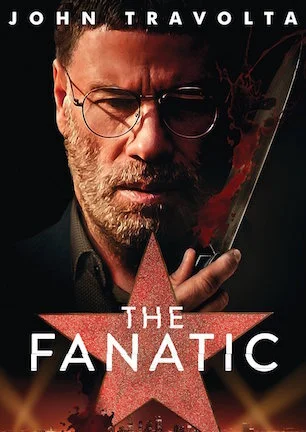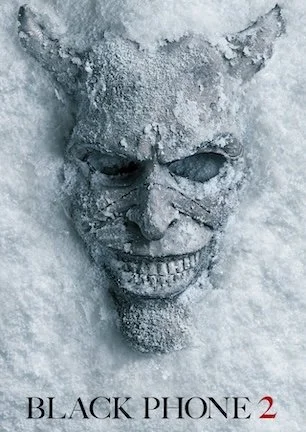Studio: Quiver Distribution
Director: Fred Durst
Writer: David Bekerman, Fred Durst
Producer: Oscar Generale, Daniel Grodnik, Fred Durst, John Travolta, Bill Kenwright
Stars: John Travolta, Devon Sawa, Ana Golja, Jacob Grodnik, James Paxton, Josh Richman, Marta Gonzalez Rodin, Kenneth Farmer
Review Score:
Summary:
An unstable film fan transforms into a dangerous stalker after an idolized actor repeatedly spurns his attempts to obtain an autograph.
Review:
Before landing here, you undoubtedly heard the hate hurled at director Fred Durst’s “The Fanatic.” No need to go into great detail. The gist of it concerns John Travolta’s performance as Moose, a mentally unstable film fan who turns into a dangerous stalker largely through unfortunate circumstances.
Without a doubt, Travolta’s problematic portrayal opens a wide door of wokeness to criticize the questionable irresponsibility of making Moose a bullied autistic misfit as opposed to an unhinged sociopathic villain. But if you’ll bear with a few potentially pertinent anecdotes, I’ll endeavor to present a counterpoint contending Moose may be more grounded in reality than many might be comfortable admitting.
The closest I’ll probably ever come to experiencing an inkling of what it might be like to be a popular celebrity came at “The Conjuring 2” (review here) premiere in 2016. For an unknown reason I suspect was an accident since none of my peers received one, a ticket to the after party accompanied my invitation to cover the screening as press.
When the movie let out, I took a hasty beeline to the hotel hosting the reception to avoid the claustrophobic scene in the theater courtyard. By complete coincidence, I happened to step from the cordoned-off curb at exactly the same moment Vera Farmiga’s security team exited to escort her across the street too. They probably would have pushed me out of the way like every other bystander except I was already in such a confident stride, and didn’t initially notice Farmiga directly behind me, I effectively became the lead man in her entourage. In fact, the only reason I did finally notice Farmiga pressing at my back is because we were barely halfway across Hollywood Boulevard when a mob of fans, mostly grown men bearing posters and glossy 8x10s, clumped around us shouting “Vera!” while thrusting sharpies like crazed knights at a joust.
My night was only mildly inconvenienced for three minutes as this swarm slowed our pace to a crawl. My dominant thought was, “there’s no way I could tolerate this every day of my life.”
This was my single vicarious experience. From the other side of the dividing line though, I’ve witnessed countless situations where celebrities have been stuck in awkward fan interactions.
I’ve watched George A. Romero patiently indulge a man recounting his goiter-induced hospital stay at a Fangoria Weekend of Horrors. I listened to an uncomfortably enthusiastic teen pitch his “Secret Wars” script to Benedict Wong at San Diego Comic-Con (“Mark Hamill is going to play The Beyonder!”). I don’t know how many times I’ve heard John Carpenter reply “thank you very much” in response to an “I just want to say…” from an excited fan. I’ve seen people sneak into private parties and beef with invited patrons before mixing it up with security.
Just recently at Son of Monsterpalooza I overheard someone tell an actor that his work “really makes him think.” Then the fan’s tone turned so strange, I hung around a minute because I briefly thought he might pull a weapon until the actor deftly removed himself from the encounter entirely.
Across many years of conventions, film festival fetes, and other such events, I do not recall ever being within arm’s reach of a notable name and not personally witnessing a fan interaction worthy of clenching your teeth or cringing. The reason I mention so many individual occurrences is because what I came to realize is, weirdo fans aren’t the exception. They are the norm.
Travolta’s uneasy interpretation of someone sympathetically troubled instead of sinisterly toxic is a practically perfect amalgamation of every peculiar experience mentioned above. Insistently seeing his characterization as insensitive ignores how painfully authentic Moose is to a predominant personality in fandom. Certainly no stranger to odd audience interactions of his own, Travolta creates a warped persona that’s nigh impossible to take your eyes off of, out of fascination as much as fear regarding what manic fantasy might drive his next alarming action.
What some might see as compelling, others might see as camp. To be sure, Travolta stokes snickers with silly dialogue that seems off-the-cuff, tricky tics that could be improvisation, and a weird wardrobe built from hacky Hawaiian shirts and a homemade haircut.
Travolta works infinitely harder than anyone else however. Moose’s misfires are actually a result of Travolta fearlessly exploring every available avenue to further flesh his character. When it doesn’t work, fault falls more on first-time director Fred Durst for not keeping kookiness on a tighter leash.
Ultimately, inexperienced indulgence fails to fulfill “The Fanatic’s” promise. Improved tuning to acting, writing, and editing, and Travolta’s exuberant commitment wouldn’t be rewarded by appearing so comically over-the-top. Moose, and by association Travolta, isn’t “The Fanatic’s” biggest problem. Everyone else is.
Being a narcissist whose marriage hit the skids because he pulled a Schwarzenegger with his maid makes it hard to boo-hoo Hunter Dunbar, the object of Moose’s unreasonable obsession. I couldn’t tell you who the good guy or the bad guy is supposed to be in Moose and Hunter’s matchup. I don’t think Durst knows either. As a result of each man’s skewed presentation, as well as the active role Hunter takes to insultingly push Moose past his limit, “The Fanatic” ends up as a cautionary tale for a-hole celebrities only. The movie’s misguided moral implies if you just stop being a dick and take two seconds for an autograph, you might not have to deal with a potentially dangerous signature seeker in the first place.
Sure, it’s odd that Durst includes a Limp Bizkit song accompanied by Hunter musing how “hot” the track is. I can forgive that reference no matter how quaintly dated it is. If you had a band and also made a movie, you’d probably mention one in the other too.
What’s weirder is Moose’s paparazzi pal Leah lamenting missing her chance to snap cinematographer Conrad Hall, who shot “The Fanatic,” leaving a café. TMZ wouldn’t want that photo for free. At this point, meta moments are no longer at a minimum.
Leah merely exists to facilitate poorly placed plot devices and to provide poorer placed narration anyway. Her sore thumb services are superseded only by Julio, a gardener whose single scene seems superfluous until he returns a second time to cement the climax’s quizzical conclusion.
Seemingly uncertain of what he wants to accomplish either thematically or artistically, Durst continues sending up white flags of surrender at random intervals. Why are animated chalk drawings infrequently inserted as scene transitions? Why does Moose dress up as a British bobby instead of a superhero like every other costumed panhandler on Hollywood Boulevard? Why does the story suggest the true villains are the well-meaning friends who inadvertently enable Moose’s macabre metamorphosis? If you have any answers, send them to “The Fanatic,” because I’m certain the film has no solid reasoning of its own.
For longer than anyone might think possible, John Travolta kept “The Fanatic” tracking toward a score with the potential to peak as high as a moderate recommendation. But while Moose keeps chugging, the rest of the film huffs into an unsatisfying endgame undeserving of Travolta’s effort.
Wag a shaming finger if you must, but it’s misdirected if it’s pointed at Moose. “The Fanatic” can be called many things, but “unwatchable” is not among those adjectives. That’s entirely thanks to Travolta, who easily makes Moose the most consistently interesting element of the movie. Without him, I’d consider joining the naysayers in calling “The Fanatic” an otherwise pointless disaster.
Review Score: 55






Compelling performances keep “Hallow Road” swimming as strongly as possible against the strong current of a drowsy pace.